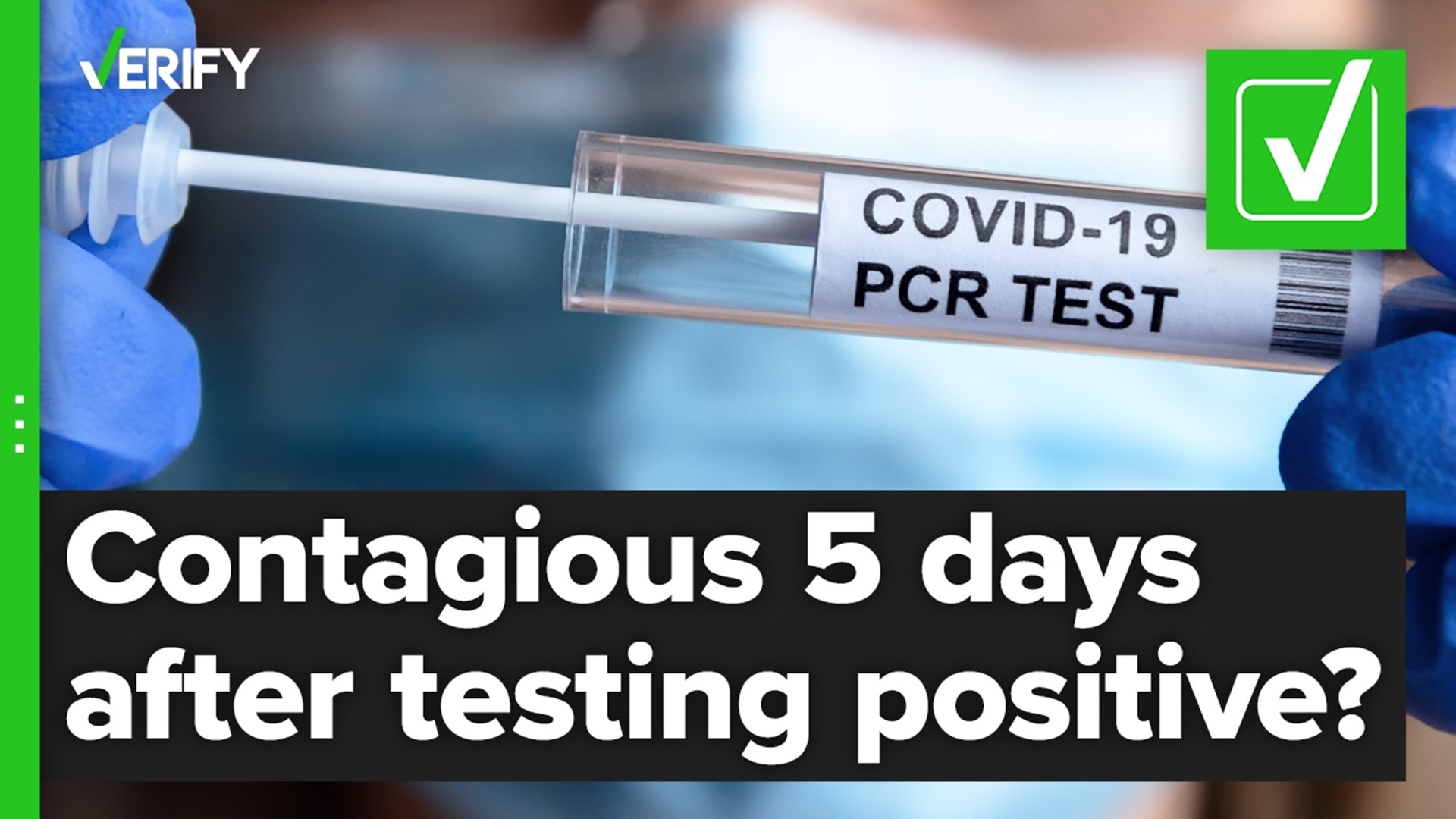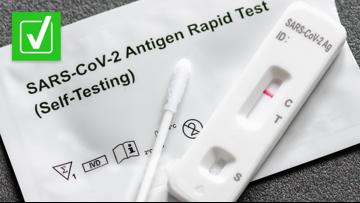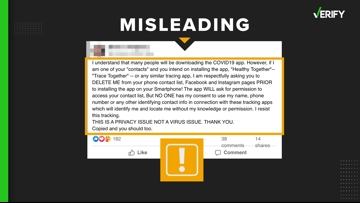On Dec. 27, the Centers for Disease Control and Prevention (CDC) announced updates to its guidance on isolation and quarantine periods for people who test positive for or are exposed to COVID-19. The new guidelines relax the isolation period to a minimum of five days, down from a minimum of 10 days.
Soon after, a number of people criticized the decision in viral social media posts, claiming people remain infectious or contagious for longer than five days.
THE QUESTION
Can a person still be contagious more than five days after their first positive COVID-19 test?
THE SOURCES
- Centers for Disease Control and Prevention (CDC)
- Study in Journal of the American Medical Association
- World Health Organization (WHO)
- Study in Eurosurveillance, a European infectious disease surveillance journal
- CDC Director Dr. Rochelle Walensky interview on CNN
- Mayo Clinic
- Houston Methodist Hospital
- Harvard Medical School
THE ANSWER
Yes, a person can still be contagious more than five days after their first positive COVID-19 test. While studies suggest people are most contagious shortly before and shortly after symptoms first begin, studies have consistently found a person can be contagious for up to 10 days after their first positive test.
WHAT WE FOUND
As of Dec. 27, the Centers for Disease Control and Prevention (CDC) guidelines state that following a positive COVID-19 test everyone, regardless of vaccination status, can leave isolation after five days if they have no symptoms or if their symptoms are resolving. If the isolating person has a fever after five days, they should continue to stay at home until their fever goes away. The five-day countdown starts after a positive test, even if symptoms manifest a few days later, a CDC spokesperson clarified.
Additionally, anyone who has not received a booster vaccine or completed their regular vaccine doses within the last six months is recommended to quarantine for at least five days and wear a mask for an additional five days if exposed to someone with COVID-19. Those who have received a booster dose or have recently completed the full vaccine course don’t have to quarantine but are recommended to wear a mask around others at all times for 10 days. The CDC recommends that anyone exposed to COVID-19 be tested on the fifth day, if possible.
Dr. Rochelle Walensky, the director of the CDC, spoke on CNN about the CDC’s decision to update its isolation guidelines. She said the CDC weighed the rise of the omicron cases, as well as behavioral science.
“What will people actually do when people need to get back to work?” Walensky said. “If we can get them to isolate, we do want to make sure they are isolating in the first five days when they are maximally infectious.”
Walensky said that less than a third of people have been isolating when they need to throughout the pandemic. “It really had a lot to do with what we thought people would be able to tolerate,” she said of the decision, adding that the CDC wanted to make sure it had guidance that can be adhered to in the current moment.
A June 2020 review of the studies at the time from Mayo Clinic found the infectivity of COVID-19 “is likely highest during the first week of illness, and subsequently declines between days 8 and 11 post onset of symptoms.”
Studies since then have continued to support that timeline for infectivity. Dr. Joshua Septimus said in a Dec. 1, 2021 article posted by Houston Methodist Hospital that most studies have found a person is no longer infectious after 10 days since testing positive, and after three days since respiratory symptoms and fever has passed.
A Dec. 10 article from Harvard Medical School said people who never develop symptoms “are probably no longer contagious” after 10 days, but there are some exceptions. For people with symptoms, Harvard Medical School said, “by the 10th day after COVID symptoms begin, most people will no longer be contagious, as long as their symptoms have continued to improve and their fever has resolved.”
But when the CDC updated its guidelines, it said its change was motivated by when COVID-19 is most contagious— not the entire time a person could be contagious.
“The change is motivated by science demonstrating that the majority of SARS-CoV-2 transmission occurs early in the course of illness, generally in the 1-2 days prior to onset of symptoms and the 2-3 days after,” the CDC said in its Dec. 27 media statement.
An August 2021 study conducted by researchers from various public health schools in the United States found the risk of COVID-19 transmission is highest two days before the onset of symptoms and for three days after. The researchers said their results were consistent with the results of other studies “suggesting that viral load may peak at 2 days before symptom onset and decline quickly after 1 week of symptoms.”
The researchers from the August 2021 study cited four other studies that found similar results, all of which were conducted during the first year of the pandemic. Those studies found infectiousness peaked around the time of symptom onset.
The World Health Organization (WHO) said in a Dec. 23 COVID-19 transmission FAQ that infected people appear to be the most contagious just before they develop symptoms and early in their illness, according to laboratory data. It noted people who develop severe illness can be infectious for longer.
But the new CDC guidelines don’t tell people to begin their isolation two days before symptoms arise, which would be nearly impossible for people to determine. The CDC’s isolation period starts at the time of a positive test result. While the CDC says a person should continue staying at home if symptoms like fever persist, the isolation’s countdown doesn’t reset when symptoms begin.
A study conducted on omicron infections at a November Christmas party in Norway found that all but one person who tested positive ended up with at least one symptom, and that symptoms began at a median of three days from the party. This data would suggest the omicron variant has an incubation time — the time between virus infection and when symptoms begin — of three days, as opposed to four days for delta and five days for other COVID-19 variants.
But while the study found three days to be the median incubation period, the incubation period for partygoers ranged anywhere between zero days and eight days. The researchers also noted that their study might not be a representative sample of the general population, and that more research was needed.
Recently, the United Kingdom also updated its isolation guidelines. On Dec. 24, the U.K. updated its guidelines so a person can now end isolation after seven days if they test negative for COVID-19 on the sixth and seventh days of isolation.
Elsewhere, isolation guidelines currently remain unchanged. Canada’s isolation period is still at least 10 days after a positive test for asymptomatic cases and 10 days after symptoms begin for symptomatic cases. In Australia, a fully vaccinated person still must isolate for 10 days and an unvaccinated or partially vaccinated person must isolate for 14 days. The WHO’s isolation guidelines, last updated Dec. 15, still recommend people stay isolated for at least 10 days, plus three days after symptoms end should they last that long.
More from VERIFY: No, omicron cannot 'target' vaccinated individuals












